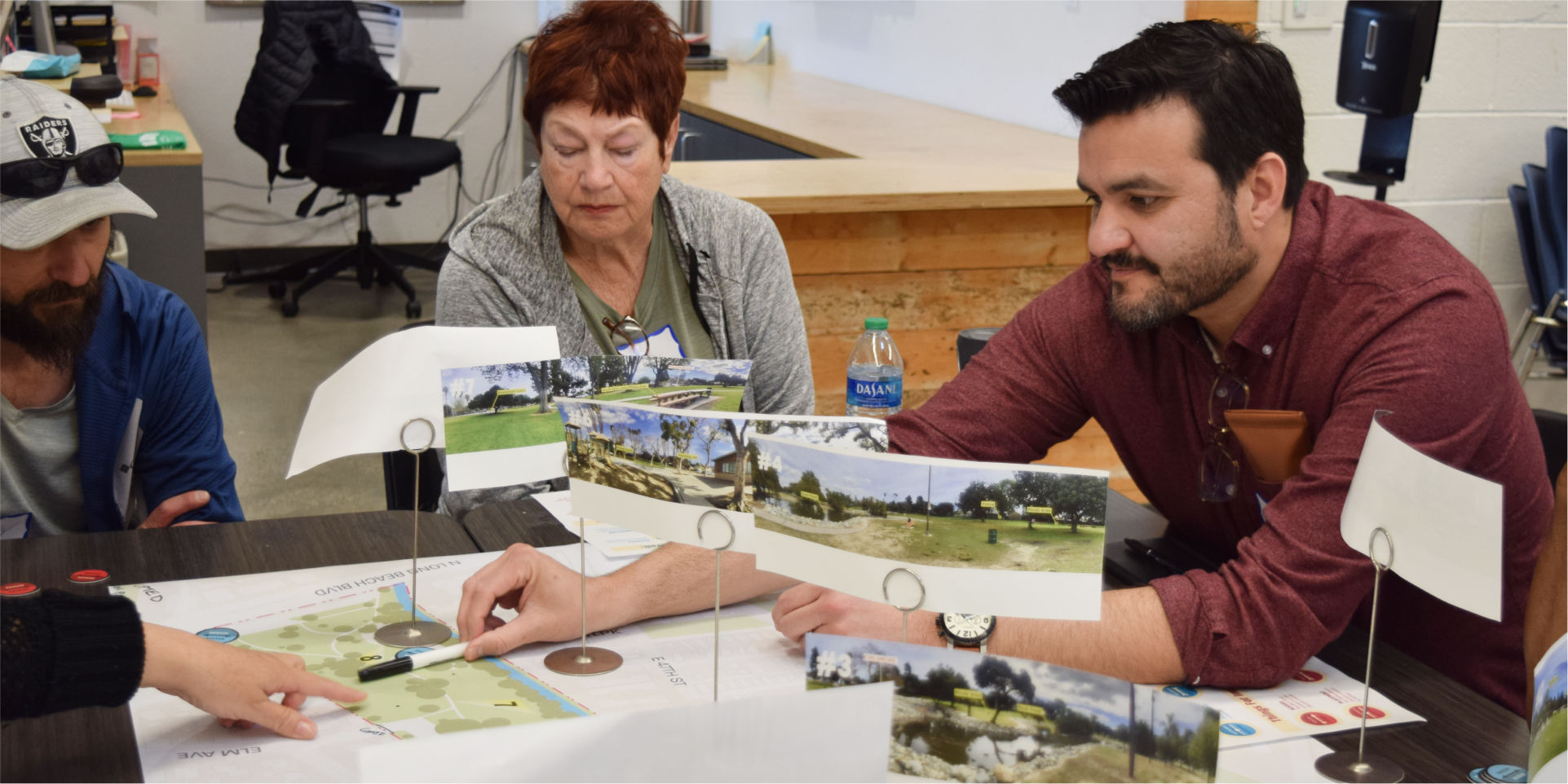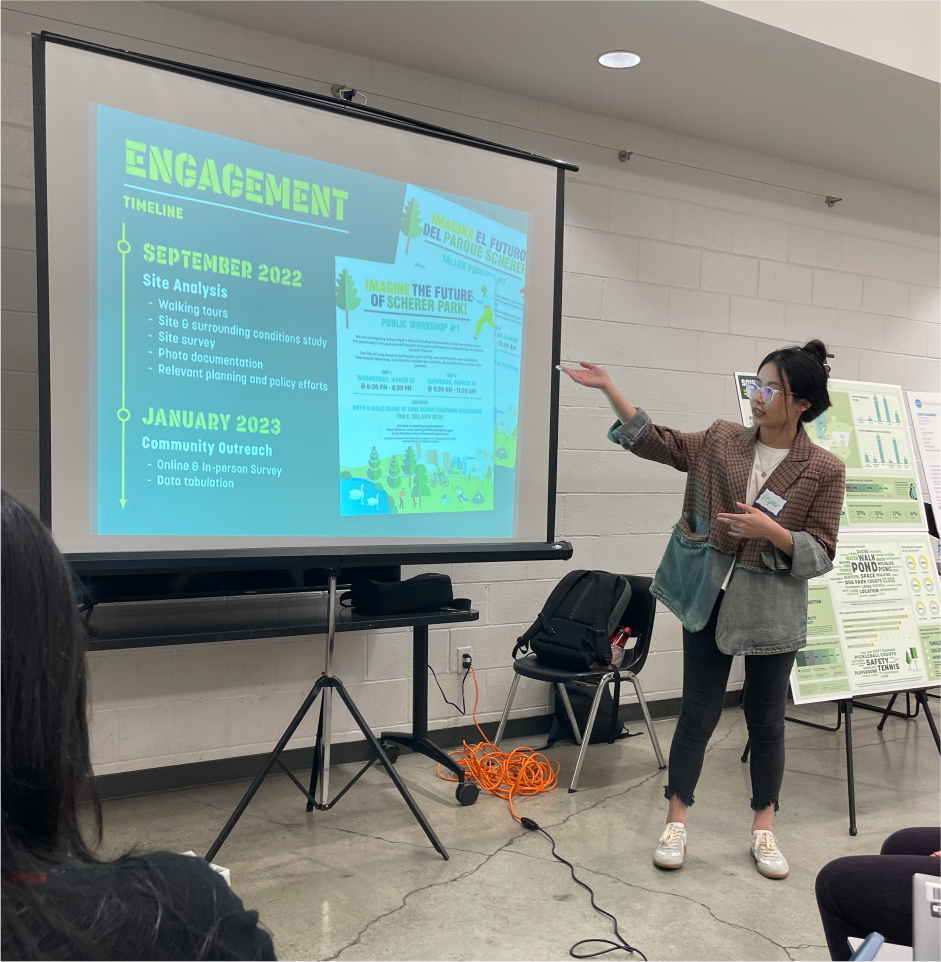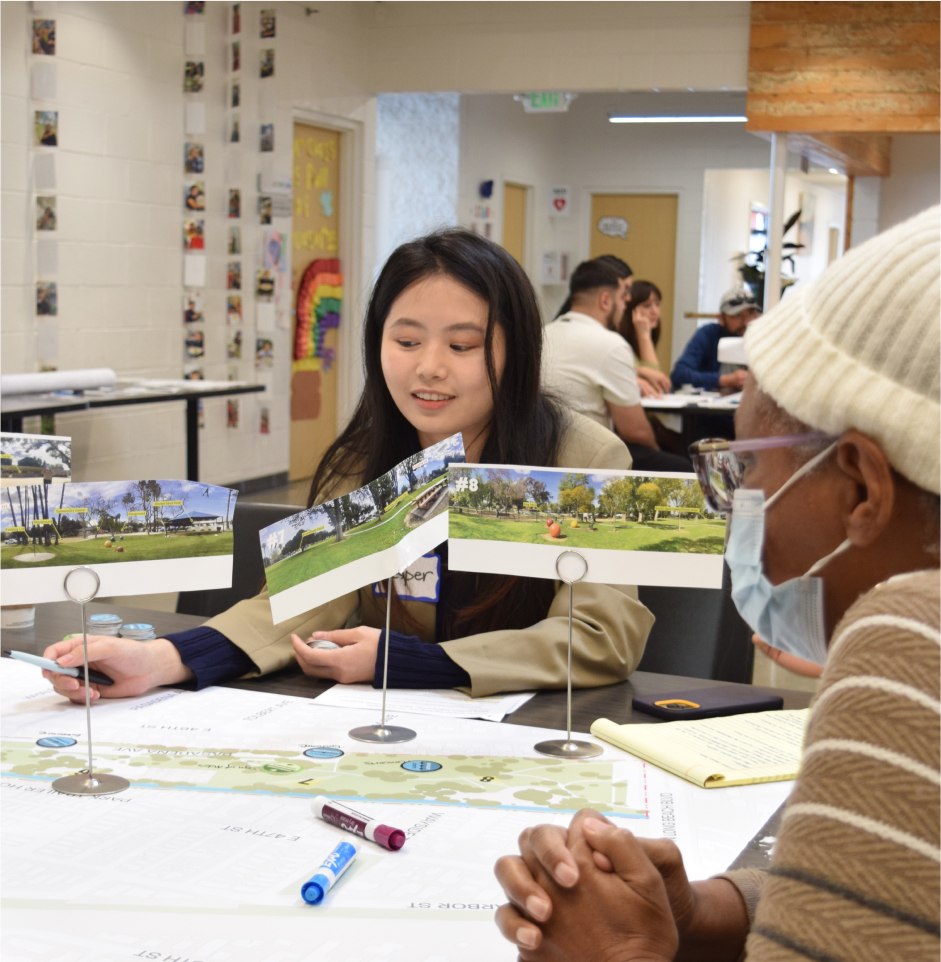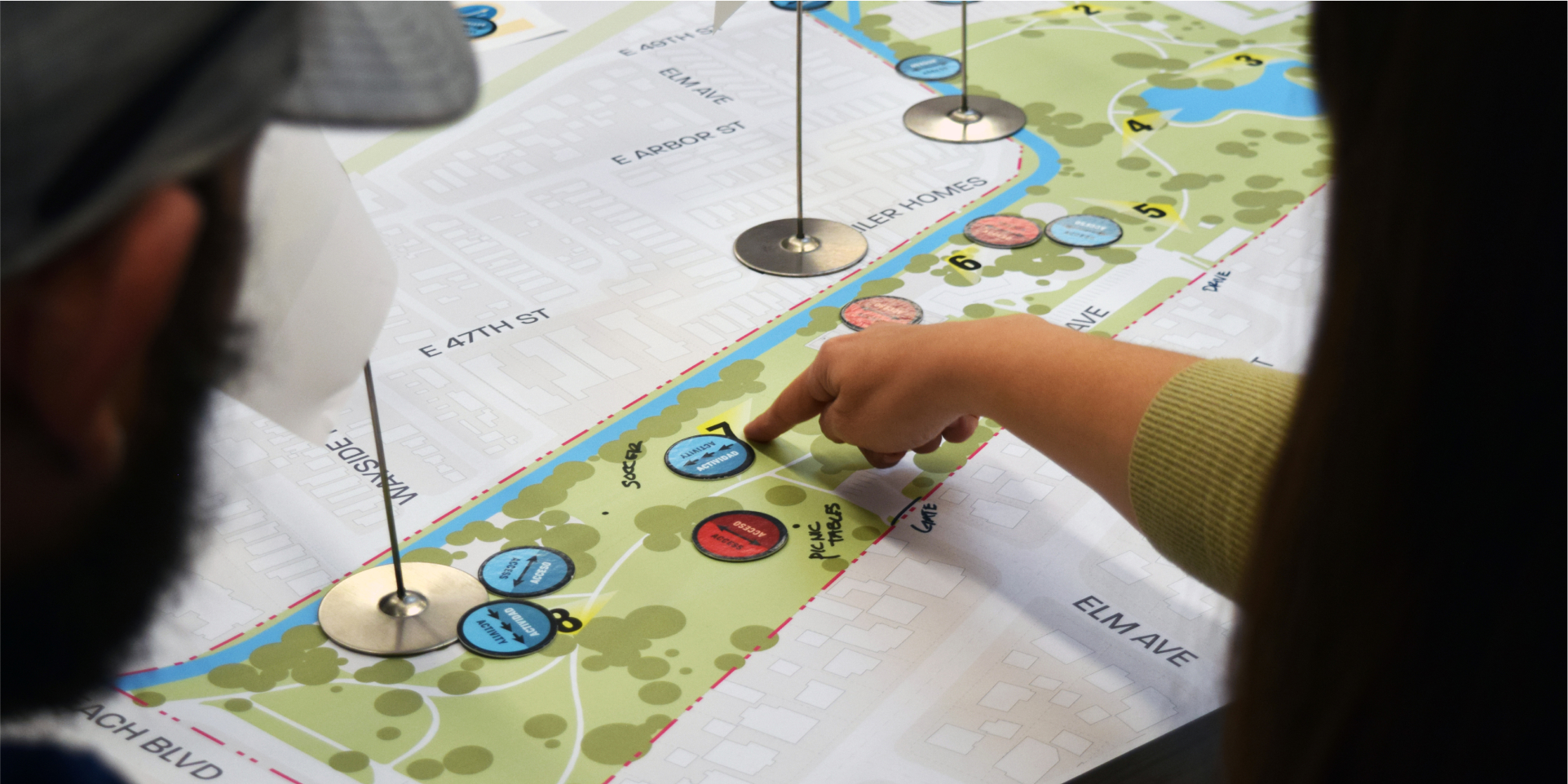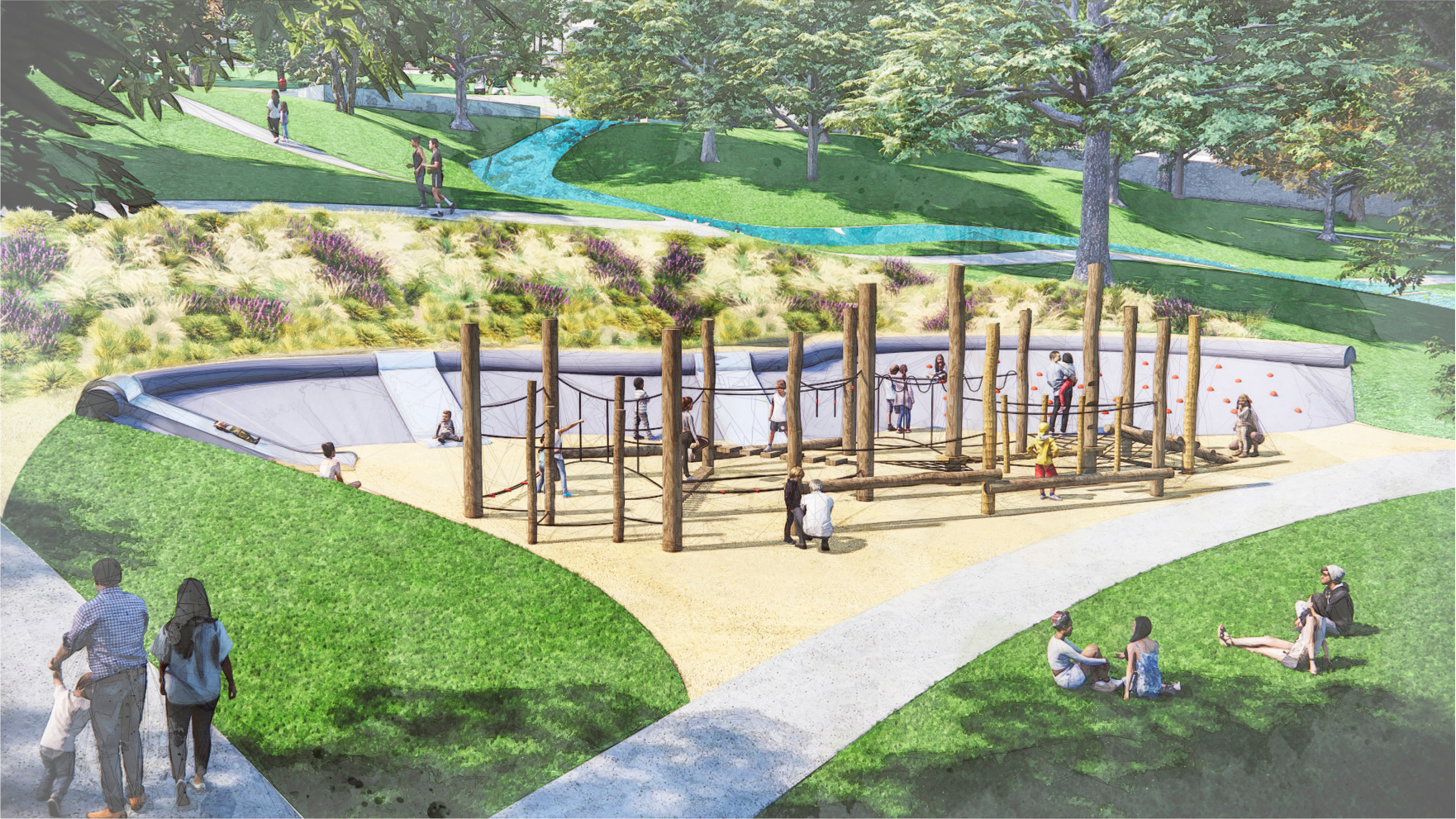
Scherer Park
Location
Long Beach, California
timeline
2022—2024
Role
Consultant
Services
More Info
The Scherer Vision Plan provides strategic guidance for future public and private investments and improvements to maximize impact, best serve the community, and enhance the overall park user experience.
This Vision Plan establishes a conceptual design for Scherer Park that depicts potential improvements of the site and how they interact with each other. Through a robust community-driven design process, neighborhood leaders, community stakeholders, and the public participated in a series of engagement activities with residents, community partners, and City agencies regarding the parks’ existing and potential future amenities, relationships, function, and circulation. As a result of this multiphase visioning process, the conceptual design and Vision Plan for the park will determine the extent and nature of the improvements for the project area.
Urban + Systems
Planning + Policy
Building + Interior
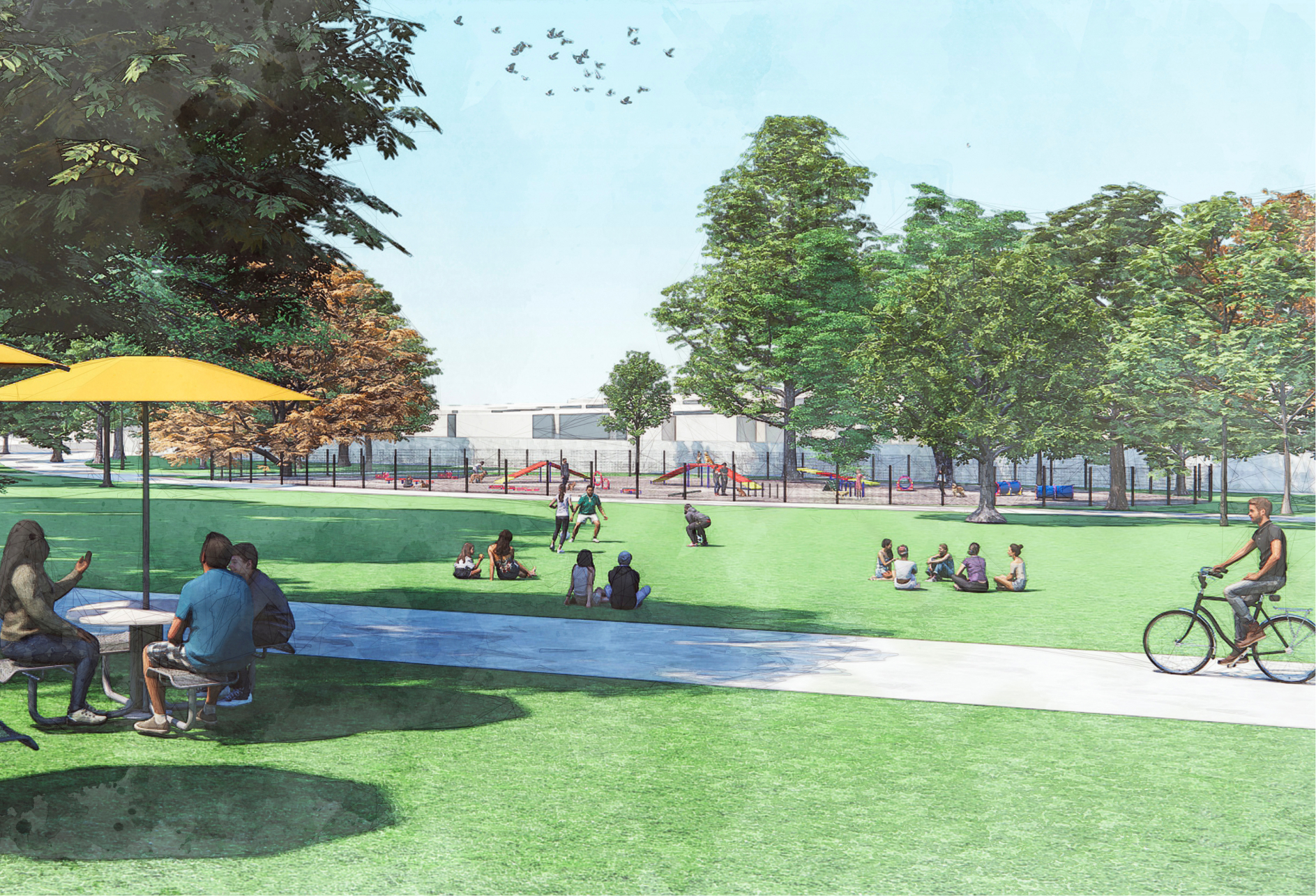
Landscape Architecture
The park's vision prioritizes an array of programming, catering to tranquil enjoyment, structured and unstructured recreation, and vibrant community gatherings. With a strong focus on promoting healthy, active lifestyles and fostering social interaction, the design aims to create a beautiful, sustainable green space. The design reflects a reorganization of the park and its elements to make more efficient use of the site, unique configuration, and its existing features, to create unique park experiences across the park. The north branch of the park consolidates the sports courts to create an active recreation plaza that would be anchored by a new, expanded clubhouse. The community landmark duck pond would be enhanced with new pathways, seating, amenities, and engagement points. A grassy amphitheater would be nestled into the natural topography between the recreation yard and duck pond. The west lawn would maintain its open character, though shifting the picnic tables toward the pathways for greater accessibility, and to provide an open grass area for sports and events. The parking lots along Long Beach Boulevard, Del Amo Boulevard, and Atlantic Avenue will be made more efficient, expanding capacity to allow for removing the Pasadena Avenue parking lot, which community members and park staff have flagged as a location for frequent nuisance activity. This also focuses park user vehicle traffic on the major corridors, not the neighborhood interior. The existing driveways will be transformed into entry gardens that greet local visitors coming on foot or bicycle. The land of the former parking lot and relocated sports courts provides additional green space, including a community garden. This new forested area and community garden will transform into a verdant landscape, a natural oasis in an urban environment, supporting local wildlife. The duck pond and border land along the flood control channel form the backbone of a watershed integration strategy for Scherer Park. The recently renovated clubhouse has the potential to be transformed programmatically into environmental education center as the center portion of the park where the watershed landscape and expanded forested area converge. A new pathway network will be established, borrowing from the winding nature of the existing paths, and layering on some hierarchy for dedicated bicycle paths that also provide convenient means for facilities maintenance teams and emergency services to access the entire park. The augmented pathway network also focuses on improving accessibility for park users with different mobility needs.
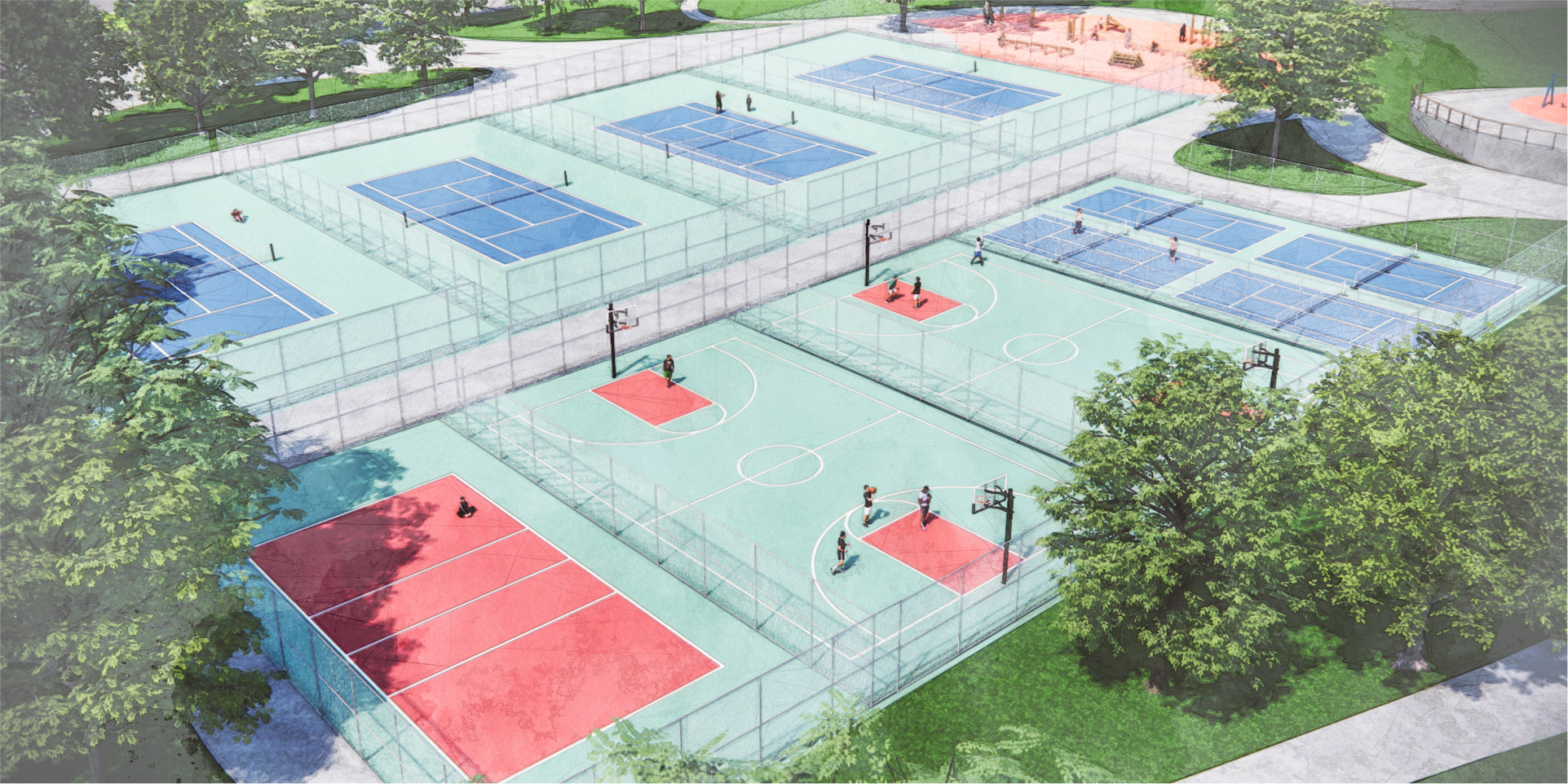
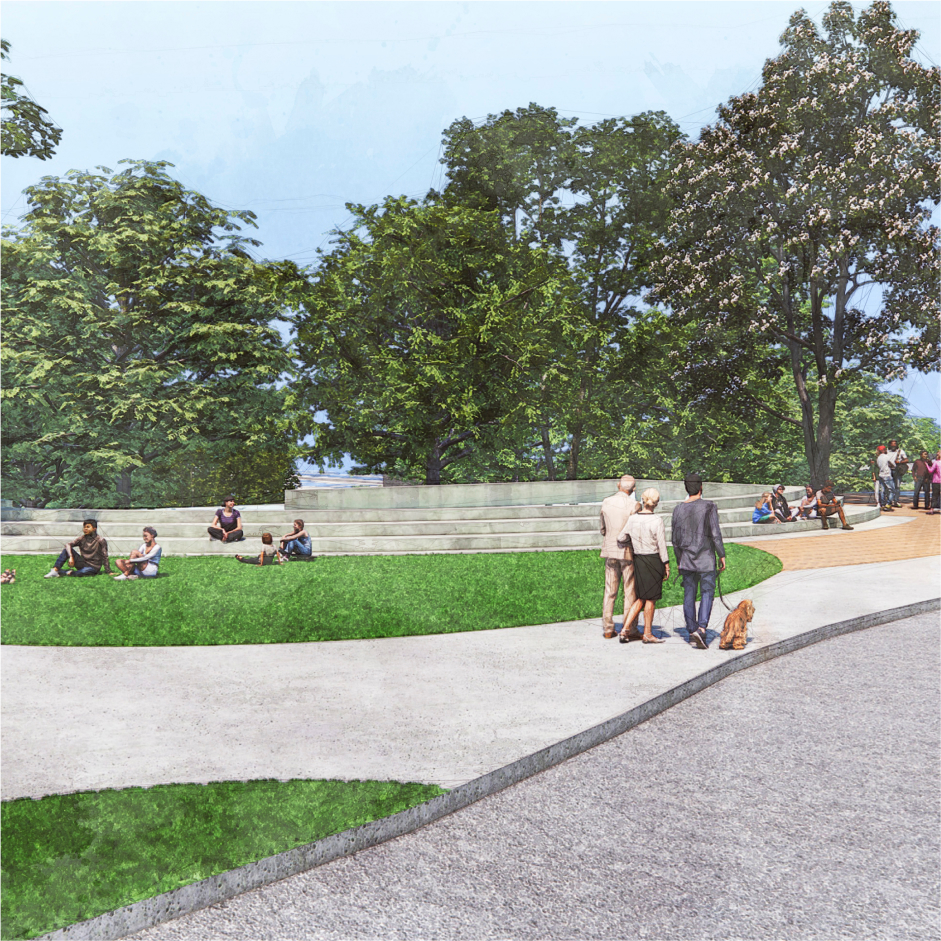
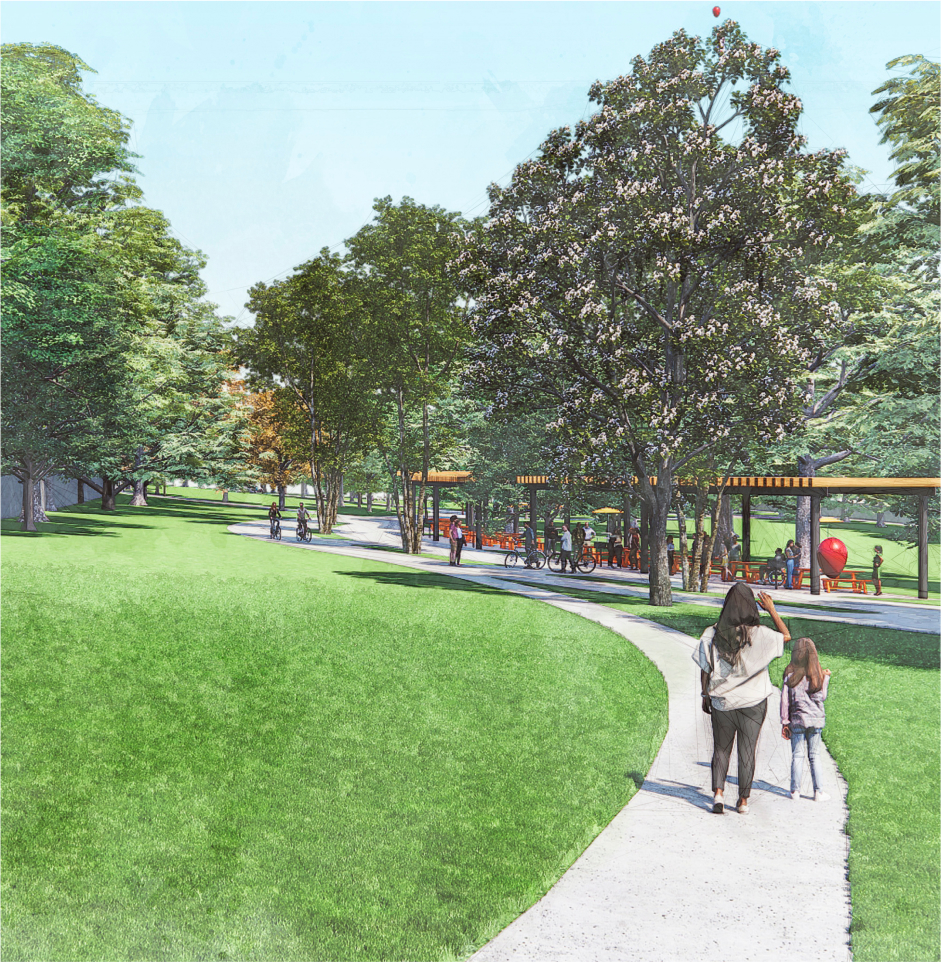

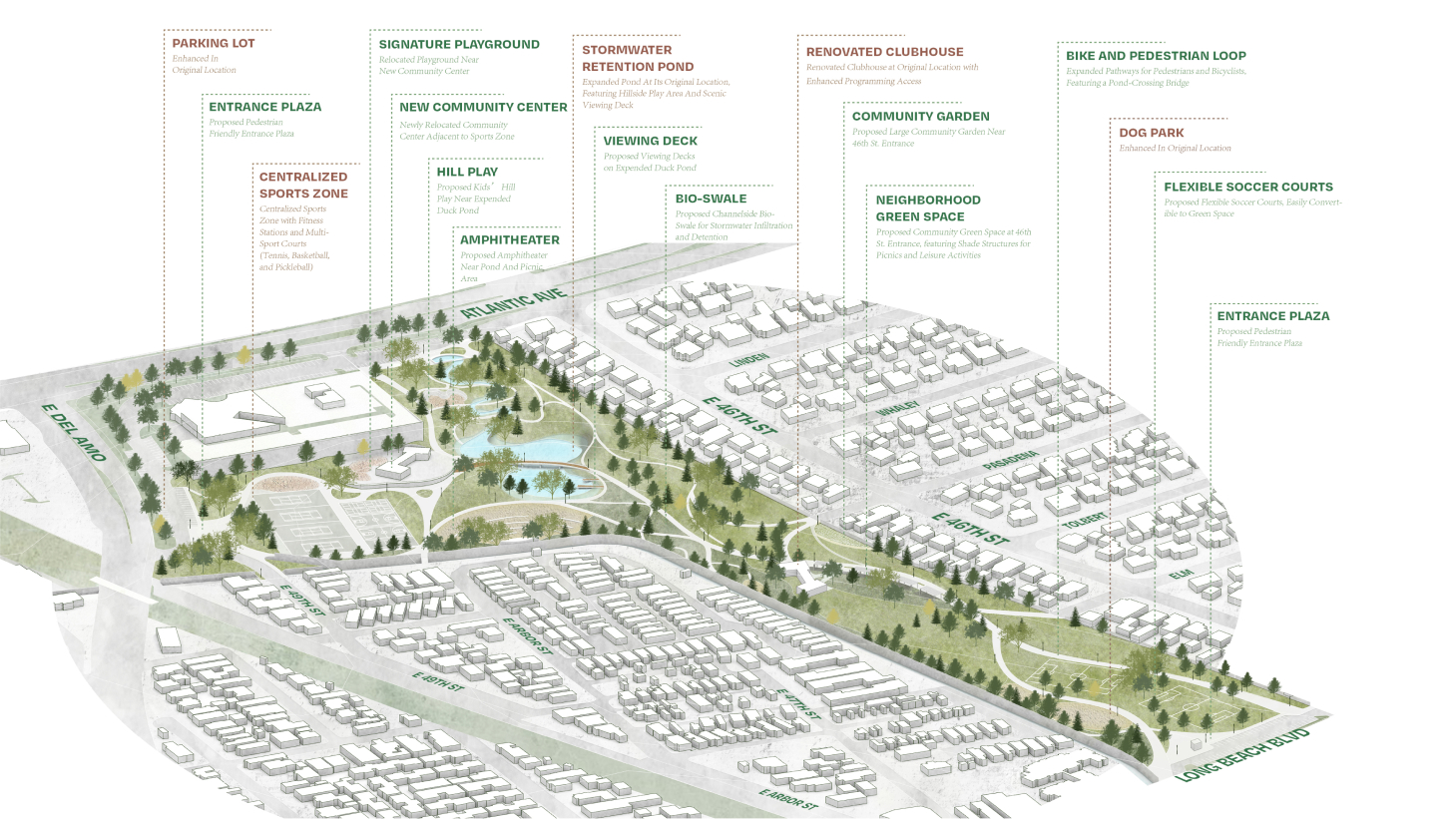
Graphic
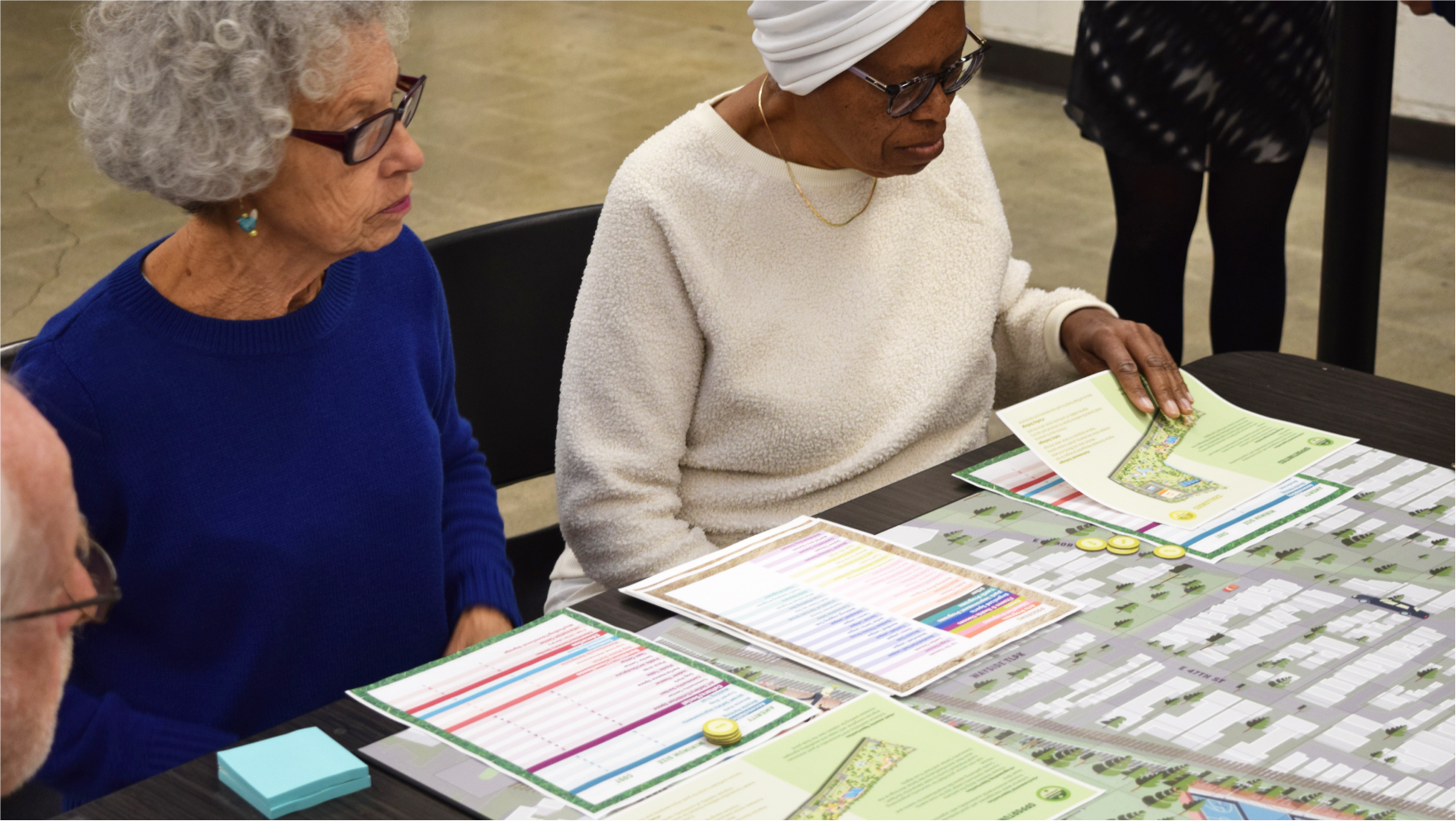
Engagement
Public outreach for the Vision Plan involved hosting a series of workshops at the park and nearby community facilities in the evenings, weekends, and during standing community events, allowing the team to reach community members who might not typically attend a planning workshop. Materials were translated into Spanish, Khmer, and Tagalog and workshops included live interpretation by community partners and the City of Long Beach’s Language Access Program. The workshop activities were designed to build from one another and flexible enough to allow participation at any step of the way. The activities were kept visually engaging and fun so that community members of all ages and abilities could participate and relate to the information quickly. They were then able to identify and prioritize improvements to the park and adjacent community facilities, including deliberate conversations of what existing programs and amenities might need to be removed to make room for new elements. Ultimately two design concepts were presented to the community - both sharing where there was consensus but each exploring directions where there was divergence in the community opinion.
